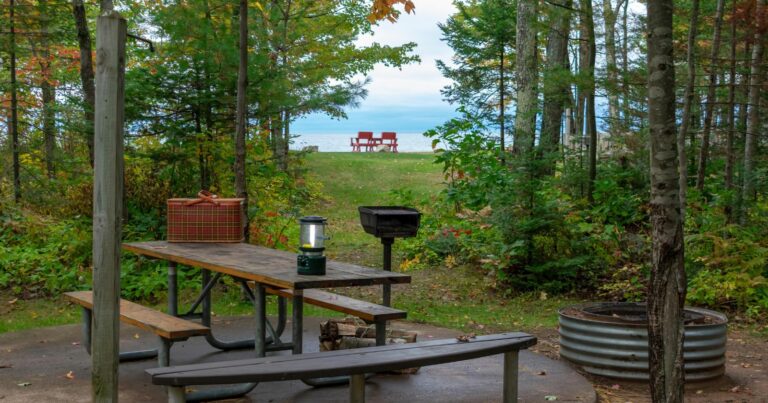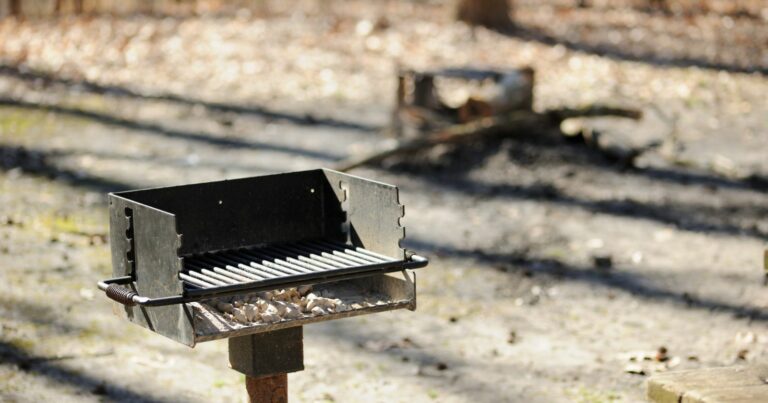How To Start A Primitive Campground
Roughing it in the great outdoors is a dream for many nature lovers. If you’re one of them, maybe you’ve thought about starting your own primitive campground. Operating a campground can be very rewarding but also involves a lot of upfront work. This article will walk you through the process step-by-step, so you can turn your passion into a successful business.
As an avid camper myself, I know how hard it can be to find remote campsites that offer a true backcountry experience. Most campgrounds cater to RVs with electric hookups and wifi access. But some of us prefer to get away from all that and just pitch a tent under the stars. If this sounds like you, a primitive campground may be the perfect entrepreneurial opportunity.
Running your own campground is no picnic though. You need to handle all the nitty-gritty operational and legal details, from obtaining permits to building safe access roads. It’s a labor of love that requires both business savvy and outdoors expertise.
In this article, I’ll walk you through exactly how to get a primitive campground up and running. I’ll share important advice on key steps like choosing the right location, establishing your brand, setting up a reservation system, and more. Whether you’re in the early planning phase or ready to break ground, you’ll learn insider tips to help make your campground vision a reality.
Owning a slice of wilderness may be your ultimate dream job. But it also comes with significant risk and responsibility. Following proper procedures from the start reduces your liability and ensures camper safety. I’ll make sure you know the necessary regulations so you can operate legally and protect the environment.
Let’s get started! The first step is determining the amenities and experience you want to offer at your campground. Do you envision basic tent camping or more glamorous glamping options? Are cabins or platform tents part of your plan? We’ll explore all the possibilities so you can create a unique campground that brings your ideal to life.
With dedication and smart planning, you can make your campground dream come true. I’m excited to share insider advice so you can confidently navigate the process. Let’s hit the trail to success together!
Pick the Perfect Spot
Choosing the right location is one of the most important decisions when starting a primitive campground. Here are some factors to consider:
- Find a large, remote parcel of land with access to hiking trails and water activities. Campers will want to experience nature.
- Ensure the property has natural clearings suitable for tent sites. Avoid dense forests without open space.
- Pick a site with pleasing scenery and surroundings. Mountains, lakes, rivers, or oceans make great backdrops.
- Check local zoning laws and get approvals for commercial campground use. Some rural areas prohibit business activity.
- Make sure adequate utilities are available, like electricity and water, to service restrooms and common buildings.
- Consider road access. While remote, campers still need to be able to reach you easily.
- Research things like flood zones, fire risk, and wildlife issues specific to the area.
Form a Legal Campground Business
To operate legally, you’ll need to set up an official business structure for your campground.
- Choose a business entity: corporation, LLC, partnership, or sole proprietorship. Consult professionals to pick the best one for you.
- Select a unique campground name and register your business name.
- Apply for an Employer Identification Number (EIN) from the IRS.
- Register your business with the state and obtain necessary licenses and permits.
- Understand all relevant business taxes and maintains detailed financial records.
Fund Your Campground Venture
Opening a campground requires significant startup funding. Here are some options to cover costs:
- Save up your own cash reserves to self-fund as much as possible.
- Take out small business loans, USDA rural loans, or SBA loans.
- Crowdfund part of the seed money needed through a platform like Kickstarter.
- Seek private investors who believe in your business plan. Offer share of ownership.
- Apply for small business grants from the government, nonprofits, or private foundations.
Create Your Campground Brand
Define your unique brand identity and marketing strategy:
- Choose your ideal target audience. Families? Groups? Solo hikers?
- Pick a logo and slogan that reflects the assets and experience your campground offers.
- Establish branded colors, fonts, and image styles for use across platforms.
- Set up accounts on major social media networks to connect with customers.
- Build a professional campground website to allow online reservations.
- Distribute marketing materials like brochures to tourism boards, hiking stores, etc.
Design Safe, Eco-Friendly Sites
Plan out your campground sites appropriately:
- Mark individual tent pads and common areas like restrooms/showers.
- Establish a registration booth/office and owner’s on-site quarters.
- Designate space for central amenities like picnic tables, fire pits, and parking.
- Allow 30+ feet between sites for privacy. Rope off each site.
- Clear dead trees and brush to create safe, level tent areas.
- Gravel tent pads and walking paths to limit vegetation trampling.
- Install solar-powered, low-impact lighting along paths.
- Provide centrally located, secure storage for food away from tents.
Manage Reservations and Payment
Set up systems to easily manage bookings and collect fees:
- Use campground management software to accept reservations online.
- Take phone reservations and payments if needed.
- Accept credit cards and PayPal in addition to cash/checks for convenience.
- Send email confirmations with directions, rules, and packing lists.
- Implement cancellation policies and collect deposits to reduce no-shows.
- Assign sites appropriately based on group size and accommodation needs.
- Use chalkboards or whiteboards to register and track current campers.
Understand Regulations and Safety
Follow all legal and safety requirements to reduce liability:
- Obtain required permits for things like campfires, liquid waste, food service, etc.
- Post clear signage on rules, warnings, hiking routes, and emergency info.
- Define appropriate precautions in your official campground policies.
- Install fire rings and keep shovels, water, and extinguishers nearby.
- Fence off or signpost any areas like cliffs, caves, or rivers that pose a hazard.
- Complete CPR/First-Aid training to properly respond in an emergency.
With careful planning and a true passion for the outdoors, you can create a campground that gives people an escape to natural simplicity. By following these key steps, you’ll be well on your way to opening for campers to enjoy.







